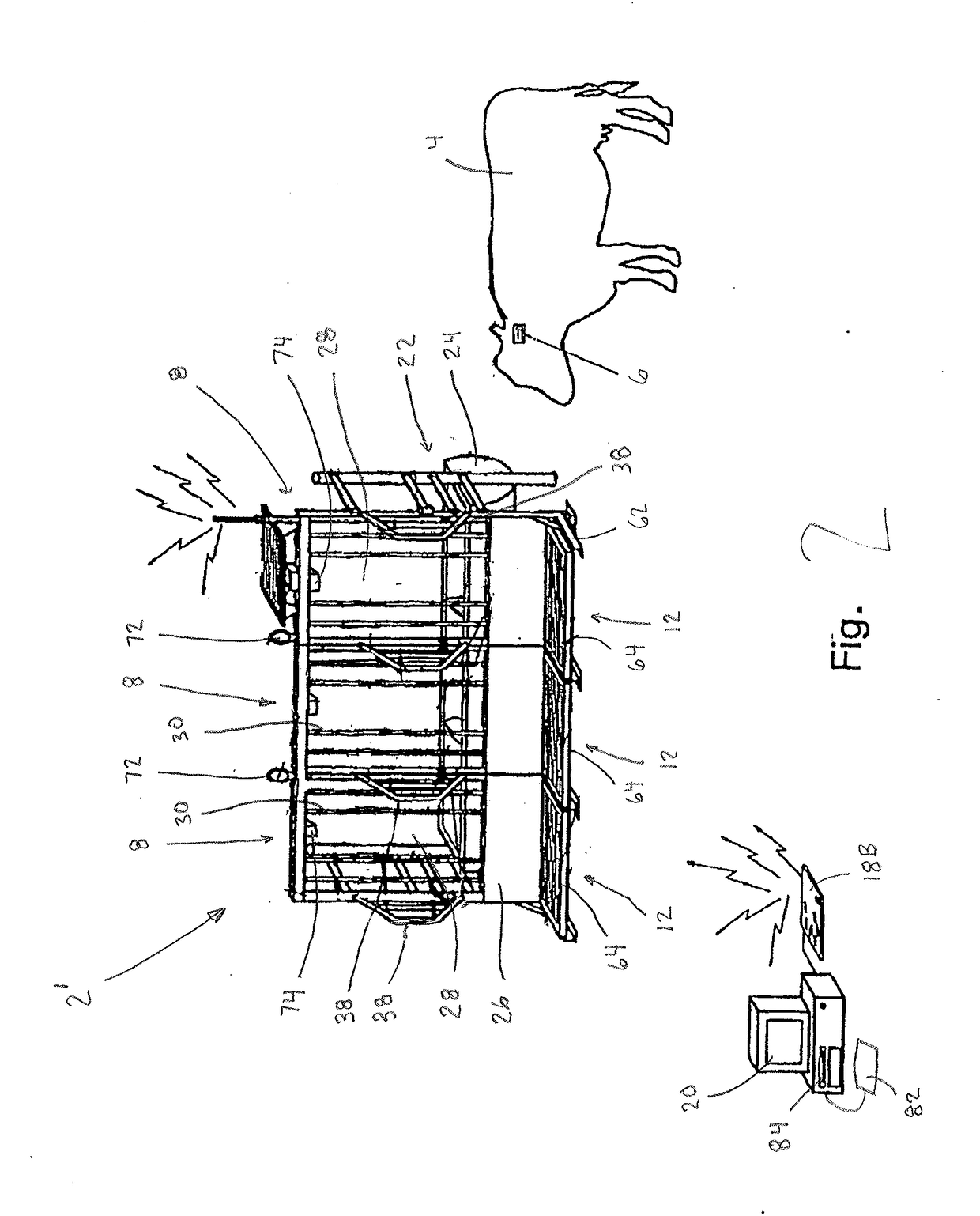With currently available technology, it is extremely difficult to read multiple transponders using one reader /
transmitter.
If each one of the multiple transponders uses the same frequency to transmit its unique identification code back to the reader /
transmitter, a single reader /
transmitter is unable to readily
decipher each individual identification code.
In order to make systems with multiple transponders operational, multiple reader / transmitters are required which, in turn, render such systems costly, and will also reduce the area in which the transponders can be simultaneously read.
This method is both labor intensive and cost prohibitive.
The methodology is further compromised when the access to the trough is open at all times and RFID is utilized to identify the animal.
RFID is position sensitive and, therefore, might require a variable amount of time to read, compromising the start of the event.
Other issues complicating the use of RFID, particularly when measuring visitation by an
individual animal to a trough is that the RFID reading field often extends to one or more adjacent trough areas.
It is therefore possible when the animal has its head close to one side or the other of a feeding trough that the adjacent RFID antenna also reads the adjacent animal's RFID tag and this potentially creates reading / calculation problems.
These
first generation systems typically must be housed in barns providing protection from wind and other environmental conditions adding significantly to the cost of measurement.
Such pressure variation becomes very problematic when trying to weigh a typical feed intake
meal event normally about 800 grams.
In terms of behavioral measurement, perhaps the most
limiting factor is that the equipment determines what a feeding event or
meal event is, by virtue of an animal visit being recorded by the equipment.
An other issue, arising from the use of such equipment, is that typical feeding behaviors are severely modified by the design of the
measurement device itself.
Several of these
early generation systems did not include a method to account for feed appearing in the trough.
This circular reasoning does not improve measurement accuracy though data may fit what the researcher perceives to be true based on prior research in group settings.
The technological transition from a GrowSafe system that could measure a small bird confined in a controlled environment to a
large animal in the cattle environment was extremely complex and required the
adaptation and development of new
electronics,
wireless communication methods, and
data acquisition and analysis techniques.
Identifying sick animals, early in the course of the
disease, can be one of the toughest jobs in
livestock production.
When treated early, most animals have an excellent chance at survival but if an animal is sick for even a few days, treatment regimens are less likely to be effective.
Several epidemiological studies have indicated that even with increased pharmaceutical use, the incidence of morbidity and mortality in feedyards has increased.
Within any
beef cattle operation, feed costs are undoubtedly the main concern since they typically account for about 60-65% of the total costs of production.
Traditionally, this was expressed as a feed:
gain ratio, but this led to the confusing result that a higher ratio meant a lower efficiency.
This issue has the potential of impacting profitability across the entire meat and dairy chain if the end result of
animal welfare initiatives requires the adoption of different farming practices or
processing methods.
In North America, a ban on the use of antimicrobials for prophylaxis would result in a further increase in the incidence of
clinical disease, decreased performance and increased costs of production.
The
beef cattle feedlot industry has not explored cost-effective feeding and production alternatives to the use of antimicrobials for
disease prevention.
 Login to View More
Login to View More  Login to View More
Login to View More 


